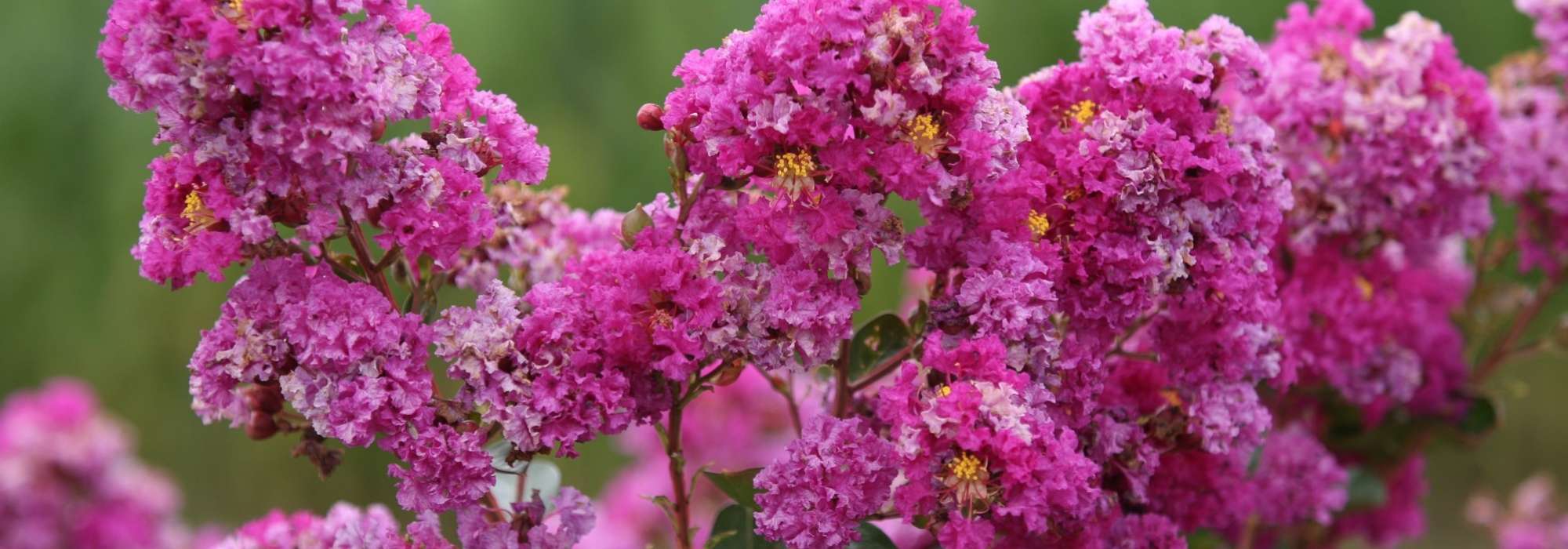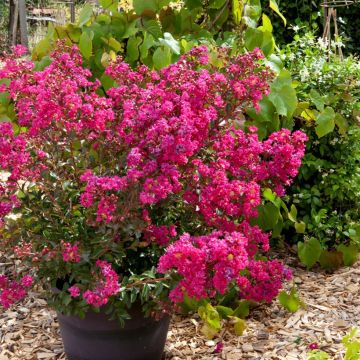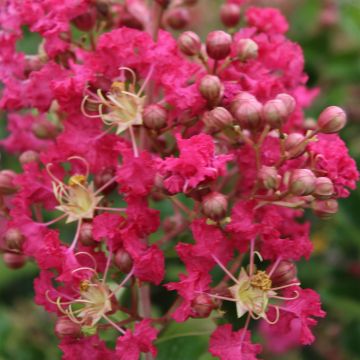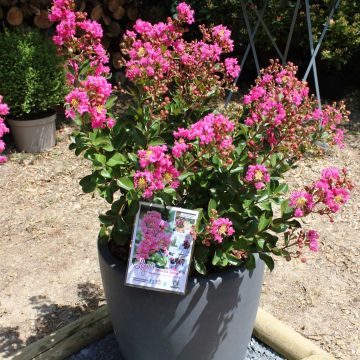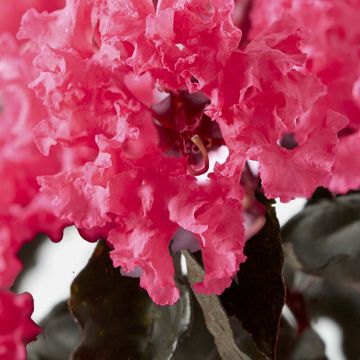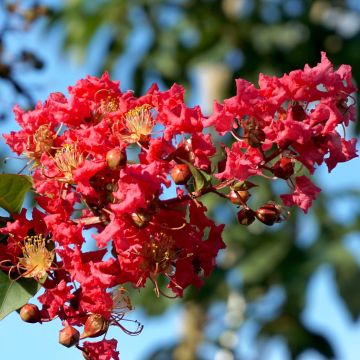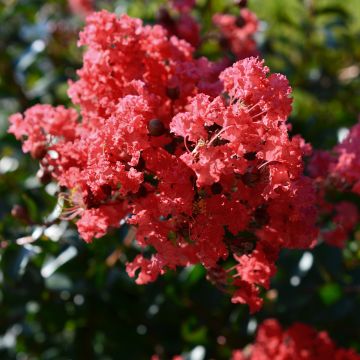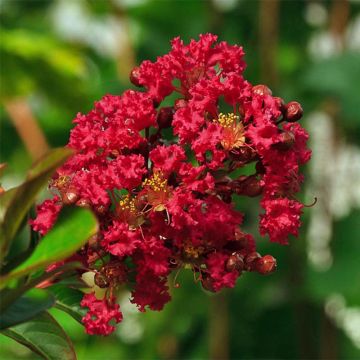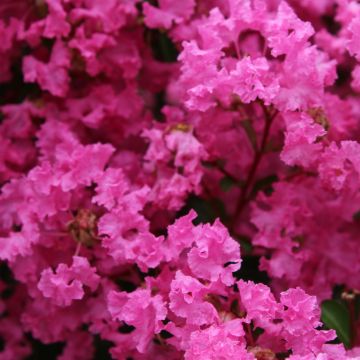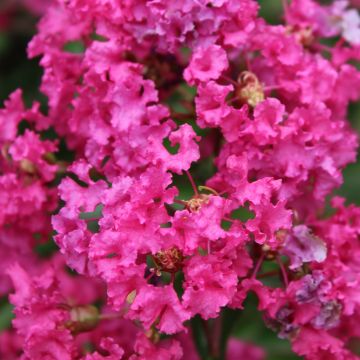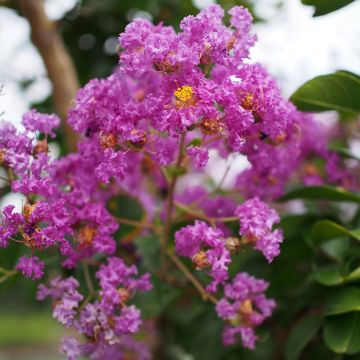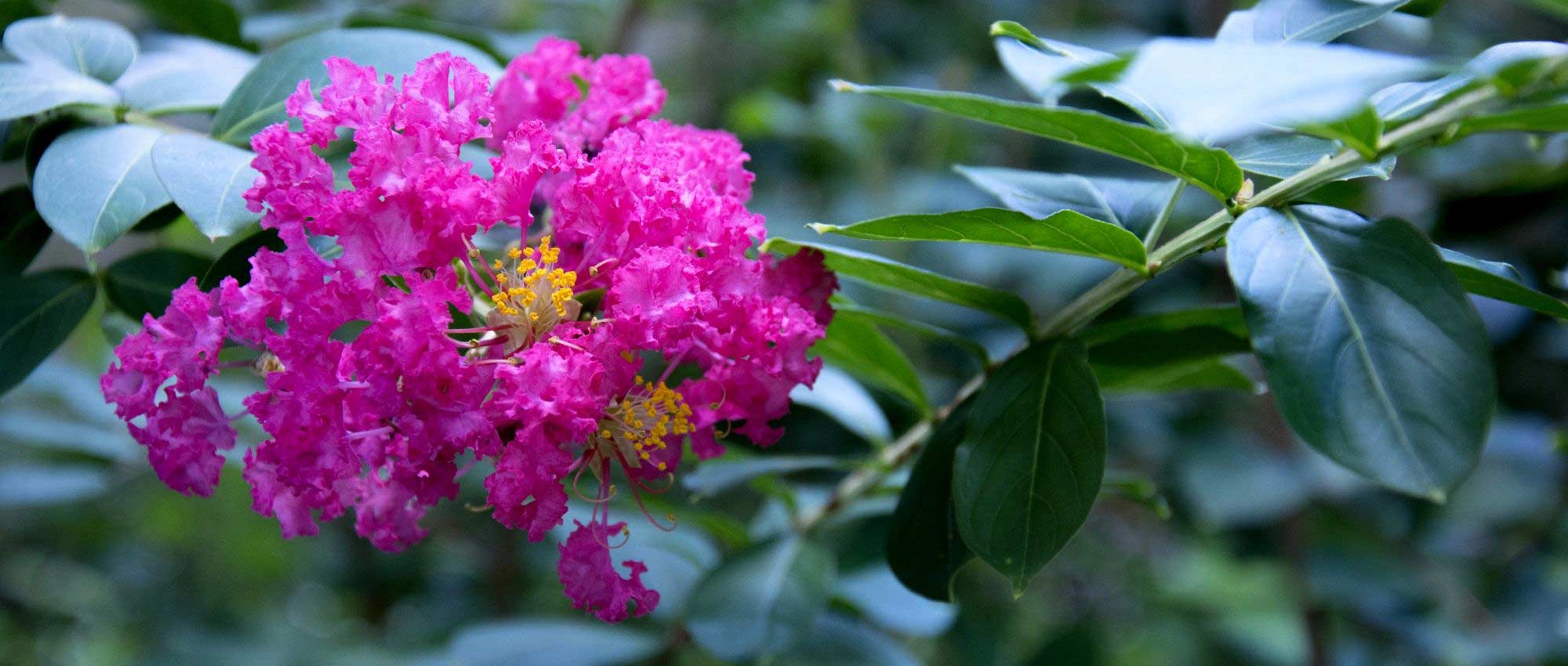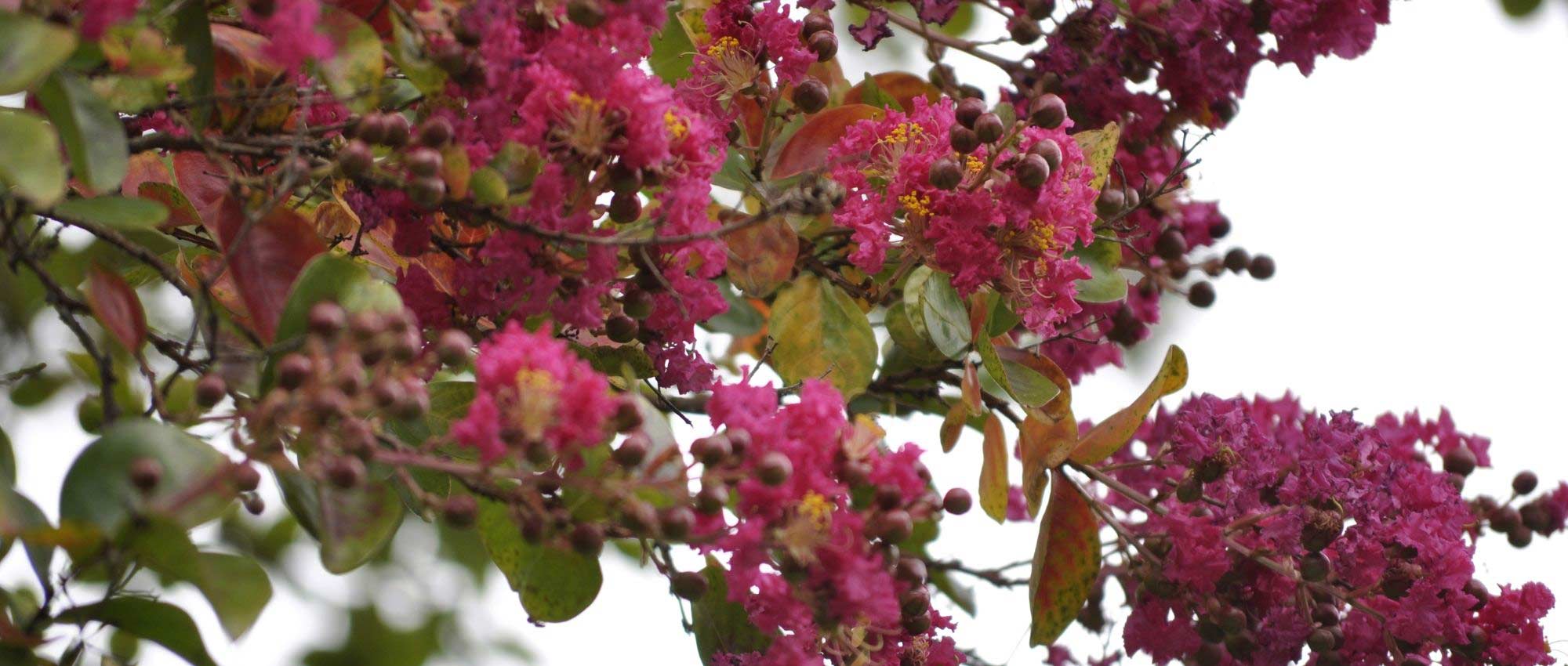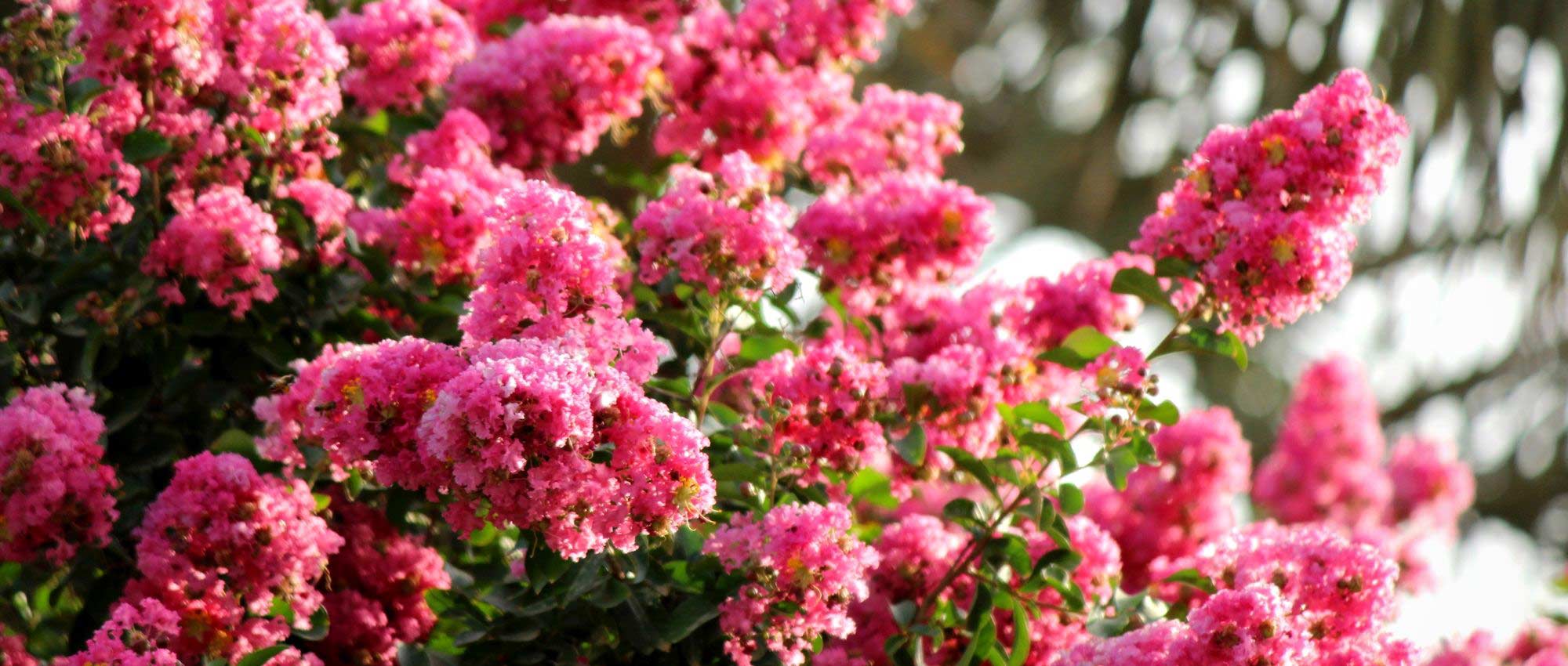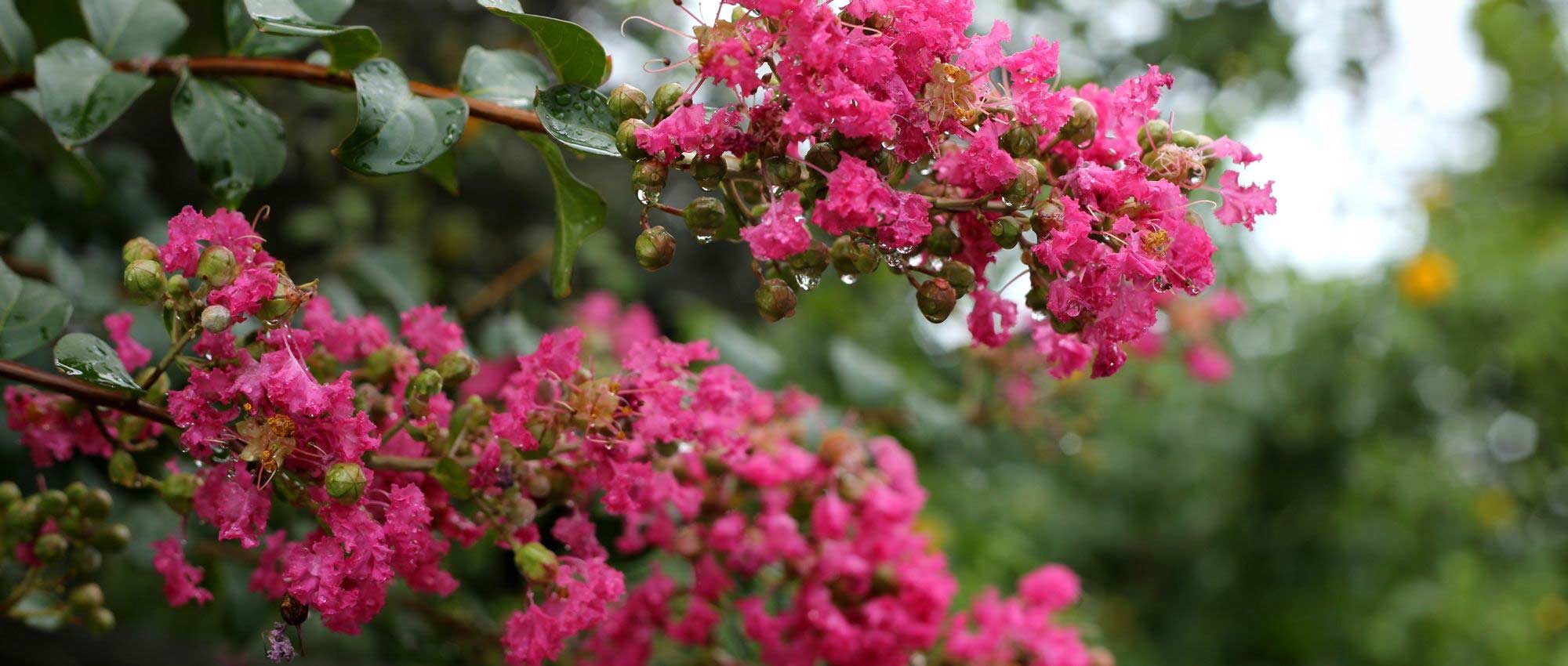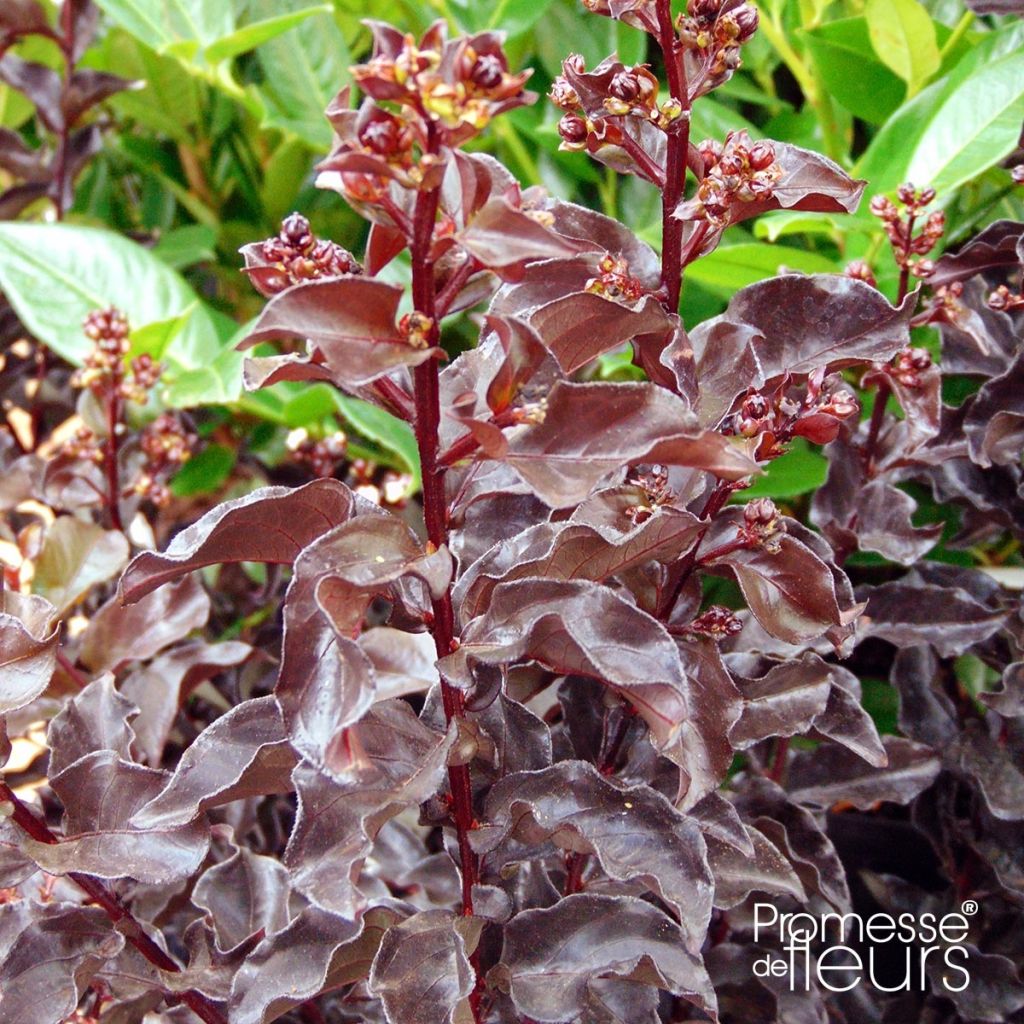

Lagerstroemia indica Black Solitaire Best Red - Crape Myrtle
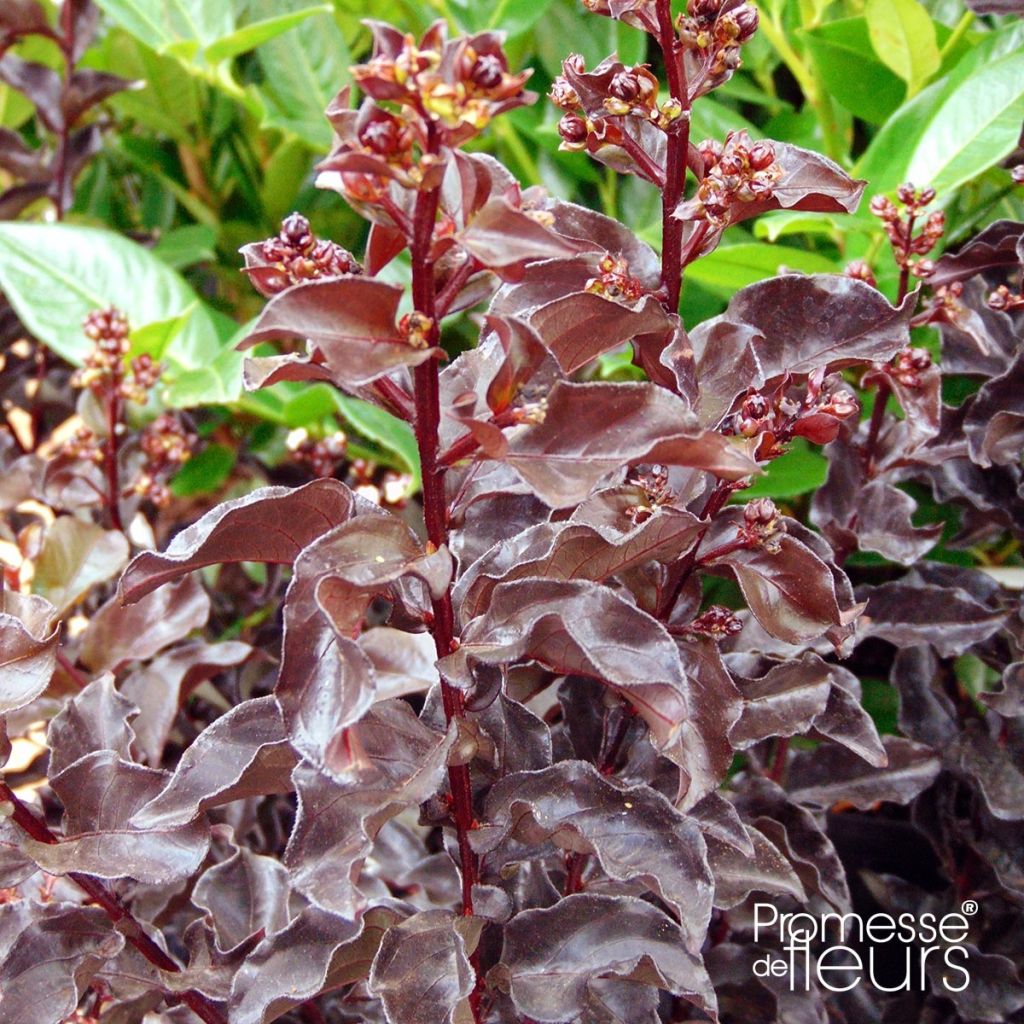

Lagerstroemia indica Black Solitaire Best Red - Crape Myrtle
Lagerstroemia indica Black Solitaire Best Red - Crape Myrtle
Lagerstroemia indica Black Solitaire® Best Red
Crape Myrtle, Crepe Myrtle, Indian Lilac
Plant arrived without a single leaf and with broken branches, let's see how it goes...
CK, 12/11/2024
Special offer!
Receive a €20 voucher for any order over €90 (excluding delivery costs, credit notes, and plastic-free options)!
1- Add your favorite plants to your cart.
2- Once you have reached €90, confirm your order (you can even choose the delivery date!).
3- As soon as your order is shipped, you will receive an email containing your voucher code, valid for 3 months (90 days).
Your voucher is unique and can only be used once, for any order with a minimum value of €20, excluding delivery costs.
Can be combined with other current offers, non-divisible and non-refundable.
Home or relay delivery (depending on size and destination)
Schedule delivery date,
and select date in basket
This plant carries a 24 months recovery warranty
More information
We guarantee the quality of our plants for a full growing cycle, and will replace at our expense any plant that fails to recover under normal climatic and planting conditions.

Would this plant suit my garden?
Set up your Plantfit profile →
Description
Lagerstroemia indica 'Black Solitaire Best Red' is a recent introduction of Indian lilac that has black ebony-like foliage and large conical spikes of bright red flowers that last for over three months in summer. Belonging to the Black Solitaire range, it forms a fairly compact bushy shrub with rapid growth and an upright habit. Its flowering is one of the earliest in the series. From July, dark buds burst into generously creased flowers that temporarily remain pale red before turning intense bright red and then pale red as they age until September. It is an exceptionally robust selection that demonstrates hardiness down to -15 °C (5 °F), excellent resistance to powdery mildew, and good drought tolerance. It is the perfect shrub for hot and sunny locations, provided it is given a rich, well-drained soil that remains moist in the early summers. Take advantage of its original charm to create contrasting, contemporary, and colourful scenes: in pots on your balconies, in your borders, or lined along a pathway.
Lagerstroemia indica 'Black Solitaire Best Red' is a new variety that is part of a carefully selected series of hybrids in Texas from the 'EBONY' varieties, characterised by very dark foliage. Not exceeding 3 m (9 ft 10 in) in height, these Indian lilacs are also distinguished by their fairly rapid growth and ease of cultivation in any well-drained soil.
'Black Solitaire Best Red' belongs to the Lythraceae family, just like the Lagerstroemia indica from which it originates. The latter is native to China. This variety has an upright, bushy habit and moderate growth. It will reach an average height of 3 m (9 ft 10 in) with a width of 1.5 m (4 ft 11 in). Its growth is rapid. It chooses July to start its flowering, which continues until September. The inflorescences are composed of slender pedicels, each bearing five petals with undulate edges, reminiscent of crepe paper. They are gathered in dense panicles at the tips of the current year's branches.
In 'Black Solitaire Best Red', the pedicels and flower buds are a purplish-red, then the flower buds open widely in a beautiful bright red shade that fades over time. The colour of its flowers is between the dark red of the 'Black Solitaire Red Hot' variety and the bright red of 'Black Solitaire Crimson Red'. The centre of the flowers is brought to life by fine golden-yellow stamens. The coriaceous, deciduous foliage is a deep black that never fades, even under intense sunlight. It is composed of small ovate and pointed leaves with a glossy appearance. Lastly, and to end on a beautiful note, its bark, as it ages, is very interesting: smooth, beige streaked with grey, and reddish-brown, it peels off in more or less coloured patches (cinnamon, faded red, old rose, cream).
It is in isolation, near the house, that you can fully enjoy its generosity. It also looks good in a shrub border, a flowering hedge, or emerging from a mound of perennials. Create a border like a bouquet, with Nepeta, Salvia sclarea, jamensis, or Aster laevis. In autumn, it accompanies the beautiful autumn foliage of Cotinus and deciduous euonymus. In a large pot on the terrace, it puts on a show while summer blooms fade. We envisage a simple tricoloured plant carpet as a ground cover to highlight the Indian lilac. A carpet of Stachys byzantina, Nepeta mussini, and silver baskets will dress the base of its trunk, emphasising the beauty of its bark, its flamboyant autumn foliage, and its intensely coloured flowering.
NB: Karl Von Linne named this tree to pay tribute to his friend Magnus Von Lagestroem (1696-1759), who had sent it to him from India for identification. Originally, this tree was used to decorate Chinese temples. It should be noted that this tree produces fruits that have a narcotic effect if ingested.
Lagerstroemia indica Black Solitaire Best Red - Crape Myrtle in pictures
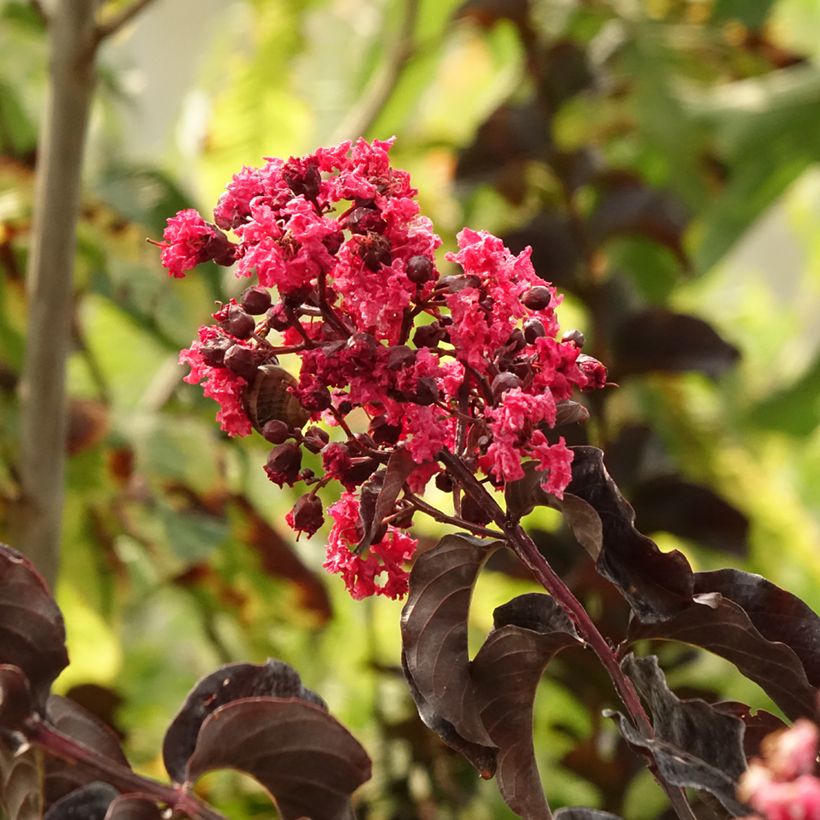

Plant habit
Flowering
Foliage
Botanical data
Lagerstroemia
indica
Black Solitaire® Best Red
Lythraceae
Crape Myrtle, Crepe Myrtle, Indian Lilac
Cultivar or hybrid
Other Lagerstroemia - Crape Myrtle
View all →Planting and care
We advise you to plant Lagerstroemia indica 'Black Solitaire Best Red' in spring, when there is no longer a risk of frost, in a very sunny and sheltered location, in rich, rather moist, well-drained light soil and, if possible, soil that is slightly acidic, neutral or low in limestone. It will appreciate an application of compost and a thick layer of dead leaves, especially during the first two winters in cold regions. It is necessary to prune the flowering branches very short in February-March, leaving only 4 to 6 buds to balance its branches and stimulate the growth of future flower-bearing branches. If necessary, remove weak twigs and poorly positioned branches.
Planting period
Intended location
Care
Planting & care advice
-
, onOrder confirmed
Reply from on Promesse de fleurs
Haven't found what you were looking for?
Hardiness is the lowest winter temperature a plant can endure without suffering serious damage or even dying. However, hardiness is affected by location (a sheltered area, such as a patio), protection (winter cover) and soil type (hardiness is improved by well-drained soil).

Photo Sharing Terms & Conditions
In order to encourage gardeners to interact and share their experiences, Promesse de fleurs offers various media enabling content to be uploaded onto its Site - in particular via the ‘Photo sharing’ module.
The User agrees to refrain from:
- Posting any content that is illegal, prejudicial, insulting, racist, inciteful to hatred, revisionist, contrary to public decency, that infringes on privacy or on the privacy rights of third parties, in particular the publicity rights of persons and goods, intellectual property rights, or the right to privacy.
- Submitting content on behalf of a third party;
- Impersonate the identity of a third party and/or publish any personal information about a third party;
In general, the User undertakes to refrain from any unethical behaviour.
All Content (in particular text, comments, files, images, photos, videos, creative works, etc.), which may be subject to property or intellectual property rights, image or other private rights, shall remain the property of the User, subject to the limited rights granted by the terms of the licence granted by Promesse de fleurs as stated below. Users are at liberty to publish or not to publish such Content on the Site, notably via the ‘Photo Sharing’ facility, and accept that this Content shall be made public and freely accessible, notably on the Internet.
Users further acknowledge, undertake to have ,and guarantee that they hold all necessary rights and permissions to publish such material on the Site, in particular with regard to the legislation in force pertaining to any privacy, property, intellectual property, image, or contractual rights, or rights of any other nature. By publishing such Content on the Site, Users acknowledge accepting full liability as publishers of the Content within the meaning of the law, and grant Promesse de fleurs, free of charge, an inclusive, worldwide licence for the said Content for the entire duration of its publication, including all reproduction, representation, up/downloading, displaying, performing, transmission, and storage rights.
Users also grant permission for their name to be linked to the Content and accept that this link may not always be made available.
By engaging in posting material, Users consent to their Content becoming automatically accessible on the Internet, in particular on other sites and/or blogs and/or web pages of the Promesse de fleurs site, including in particular social pages and the Promesse de fleurs catalogue.
Users may secure the removal of entrusted content free of charge by issuing a simple request via our contact form.
The flowering period indicated on our website applies to countries and regions located in USDA zone 8 (France, the United Kingdom, Ireland, the Netherlands, etc.)
It will vary according to where you live:
- In zones 9 to 10 (Italy, Spain, Greece, etc.), flowering will occur about 2 to 4 weeks earlier.
- In zones 6 to 7 (Germany, Poland, Slovenia, and lower mountainous regions), flowering will be delayed by 2 to 3 weeks.
- In zone 5 (Central Europe, Scandinavia), blooming will be delayed by 3 to 5 weeks.
In temperate climates, pruning of spring-flowering shrubs (forsythia, spireas, etc.) should be done just after flowering.
Pruning of summer-flowering shrubs (Indian Lilac, Perovskia, etc.) can be done in winter or spring.
In cold regions as well as with frost-sensitive plants, avoid pruning too early when severe frosts may still occur.
The planting period indicated on our website applies to countries and regions located in USDA zone 8 (France, United Kingdom, Ireland, Netherlands).
It will vary according to where you live:
- In Mediterranean zones (Marseille, Madrid, Milan, etc.), autumn and winter are the best planting periods.
- In continental zones (Strasbourg, Munich, Vienna, etc.), delay planting by 2 to 3 weeks in spring and bring it forward by 2 to 4 weeks in autumn.
- In mountainous regions (the Alps, Pyrenees, Carpathians, etc.), it is best to plant in late spring (May-June) or late summer (August-September).
The harvesting period indicated on our website applies to countries and regions in USDA zone 8 (France, England, Ireland, the Netherlands).
In colder areas (Scandinavia, Poland, Austria...) fruit and vegetable harvests are likely to be delayed by 3-4 weeks.
In warmer areas (Italy, Spain, Greece, etc.), harvesting will probably take place earlier, depending on weather conditions.
The sowing periods indicated on our website apply to countries and regions within USDA Zone 8 (France, UK, Ireland, Netherlands).
In colder areas (Scandinavia, Poland, Austria...), delay any outdoor sowing by 3-4 weeks, or sow under glass.
In warmer climes (Italy, Spain, Greece, etc.), bring outdoor sowing forward by a few weeks.






























